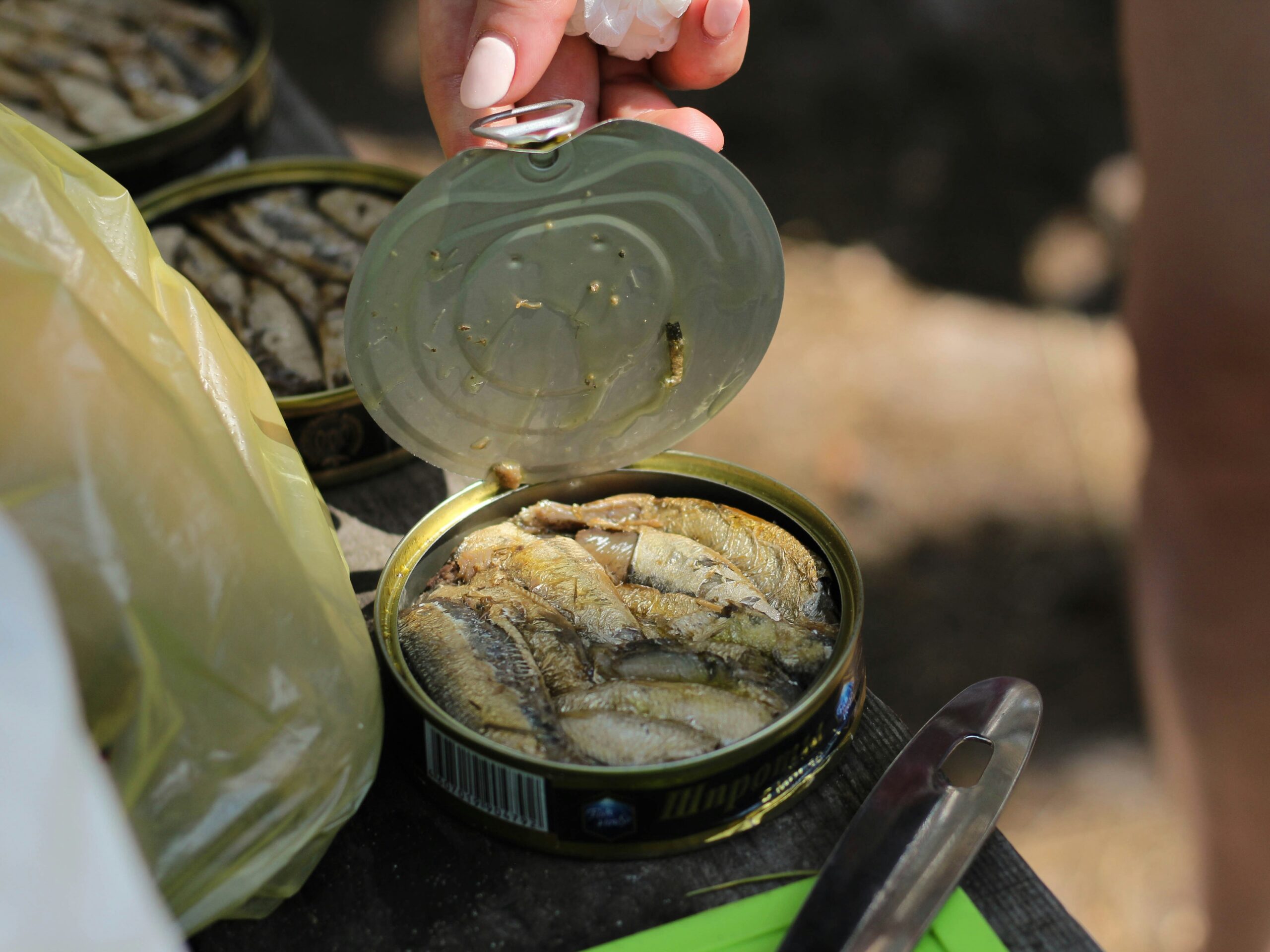Introduction to the Recall
The recent recall of Pam’s Chicken Nuggets has garnered significant attention from both consumers and food safety authorities. The recall was officially announced on [specific date], marking a critical moment in food safety protocols. This decision stemmed from concerns regarding possible contamination that could pose health risks to consumers. Investigations revealed that specific batches might have been tainted, prompting the company to take immediate action to protect public health.
Upon the announcement of the recall, several key factors contributed to widespread public concern. Health officials emphasized the potential dangers associated with consuming the affected chicken nugget products, which may have included foreign materials or harmful bacteria. Consumers were advised to check the packaging details against the recall notice to ensure their safety. The response from the public varied from alarm to disappointment, particularly among families who had relied on Pam’s Chicken Nuggets as a convenient meal option.
In light of the recall, Pam’s has implemented enhanced safety measures and protocols to prevent such incidents in the future. The company’s prompt action reflects a growing awareness within the food industry regarding the importance of quality control and consumer safety. With the ongoing discourse around food recalls and safety standards, this incident underscores the need for vigilance among consumers as well as manufacturers.
This recall not only impacts Pam’s but also serves as a reminder to the industry about the essential role of transparency and responsiveness in maintaining consumer trust. As we delve deeper into this situation, it will be imperative to understand the long-term implications of this recall on both the company’s reputation and consumer habits.
What Led to the Recall?
The recall of Pam’s Chicken Nuggets was initiated due to several concerning findings related to food safety. The primary reason was a potential contamination risk that surfaced during routine safety inspections conducted by regulatory authorities. These inspections revealed inadequate control over processing standards, which raised alarms regarding the integrity of the product. Foodborne pathogens, such as Salmonella and Listeria monocytogenes, can lead to serious health complications, prompting a swift response from the company.
Moreover, there were reports of consumer complaints linking Pam’s Chicken Nuggets to cases of foodborne illness. Investigations indicated that certain batches of the nuggets exhibited abnormal characteristics, including changes in texture and odor, which typically signal contamination. Traceback efforts led to specific production lines where improper sanitation practices may have contributed to these incidents. The confirmation of these cases played a crucial role in escalating the urgency of the recall.
The company, in collaboration with federal food safety officials, decided to pull the product from retail shelves to prevent further risk to consumers. This proactive measure illustrates the importance of a strong response system for ensuring that food products meet established safety standards. The decision underscores the essential role of regular inspections and quality checks in food manufacturing processes, reinforcing the commitment to consumer safety. It also serves as a reminder for manufacturers to maintain vigilance in their production practices to avoid any lapses that could endanger public health.
In conclusion, the combination of potential contamination risks and reported incidents is what ultimately led to the recall of Pam’s Chicken Nuggets. The emphasis on proactive measures is critical in improving food safety and restoring consumer confidence in food products.
Details of the Affected Products
In light of the recent recall of Pam’s Chicken Nuggets, it is crucial for consumers to be informed about the specific varieties and batches that have been identified as affected. The recall encompasses several distinct products, which are critical to note in order to ensure food safety and prevent any health risks.
The affected products primarily consist of Pam’s Chicken Nuggets sold in 12-ounce packages. These packages are identifiable by their prominent branding and the stated product description. Notably, the UPC code for these nuggets is 012345678901, which can usually be found on the back or bottom of the packaging. Consumers should thoroughly check their frozen stock for this specific UPC, alongside any other related characteristics of the product.
Additionally, it is imperative to pay attention to the expiration dates prominently displayed on the packages. The affected batches include those with expiration dates ranging from March 2024 to June 2024. Any products bearing these expiration dates should be considered potentially contaminated and should not be consumed under any circumstances.
To further assist in identifying the affected Pam’s Chicken Nuggets, consumers should also be cognizant of the lot codes printed on the label. The specific lot codes associated with this recall start with the prefix “PAM”, followed by a series of digits. This information is essential for consumers who may be unsure about their purchase details.
In conclusion, ensuring awareness of the specific varieties, UPC codes, expiration dates, and lot codes of the affected Pam’s Chicken Nuggets is essential for maintaining food safety. Consumers are urged to inspect their freezers carefully and follow the guidance provided by health authorities regarding this recall to mitigate any potential health risks.
Health Risks Associated with Consuming Affected Nuggets
The recall of Pam’s chicken nuggets has raised significant concerns about the potential health risks associated with consuming contaminated products. Foodborne illnesses can result from various pathogens such as Salmonella, Listeria, and E. coli, which may be present in improperly processed chicken products. These pathogens can lead to a spectrum of health issues ranging from mild gastrointestinal discomfort to severe illness.
Symptoms of foodborne illnesses typically manifest within hours to several days after consumption of contaminated food. Common signs include nausea, vomiting, diarrhea, abdominal pain, and fever. Individuals may experience different symptom severity based on their age, immune system status, and general health. Vulnerable populations, such as young children, pregnant women, elderly individuals, and those with weakened immune systems, are particularly at risk and may face more serious complications.
If you suspect that you have consumed the recalled Pam’s chicken nuggets, it is essential to monitor your health closely. Early symptoms can often be mistaken for a common stomach virus, but should not be overlooked. If you begin to exhibit gastrointestinal symptoms that persist beyond a couple of days, or if you experience severe symptoms like high fever, prolonged vomiting, or signs of dehydration, it is advisable to seek medical attention promptly. Consulting a healthcare professional can help determine the best course of action and whether any specific testing or treatment is necessary.
In cases where you experience abnormal symptoms immediately after consuming the affected nuggets, especially if you belong to a high-risk group, urgent medical consultation is critical. Reporting any adverse effects to healthcare providers can assist in tracking the outbreak and contribute to public health measures aimed at preventing future occurrences.
How to Safely Dispose of the Affected Products
In the event of a recall, it is essential to dispose of the affected products safely to prevent any potential health risks. If you possess the recalled Pam’s Chicken Nuggets, follow these step-by-step instructions to ensure proper disposal.
First, check the label on the package to confirm that the chicken nuggets in your possession are indeed part of the recall. If your product is affected, consider returning it to the place of purchase if this option is available. Many retailers offer refunds or exchanges for recalled items, which is a proactive way to handle the situation.
If returning the product to the store is not feasible or if you prefer to dispose of it at home, it is important to handle the process carefully. Start by placing the chicken nuggets in a sealed bag or container to prevent any leakage or contamination. Proper sealing helps contain any potential pathogens or allergens, ensuring other household members are not at risk.
Next, dispose of the sealed bag in your household trash. Do not compost or recycle the product, as this could lead to exposure to unsafe food. Additionally, it may be helpful to write “Do Not Eat” on the bag or container to alert others to the hazard, particularly if your trash is picked up by someone else.
Finally, sanitize any surfaces and utensils that came into contact with the recalled chicken nuggets. Use hot, soapy water or a suitable disinfectant to clean cutting boards, countertops, and hands to remove any residual bacteria. Taking these precautions ensures your kitchen remains safe and reduces any risk associated with the recalled product. Following these guidelines will help ensure that you handle the disposal of the Pam’s Chicken Nuggets responsibly and effectively.
Consumer Reactions and Impact on Brand Trust
The recent recall of Pam’s Chicken Nuggets has elicited a considerable response from consumers, particularly across various social media platforms. Many users have taken to Twitter, Facebook, and Instagram to express their thoughts and concerns regarding the safety of the product. Some have shared personal experiences related to the recall, while others have expressed their disappointment and anger towards the brand for the lapse in safety measures. This reaction reflects a broader concern among consumers about food safety in general, a sentiment that has been heightened in recent years due to various high-profile food recalls.
In addition to expressing their thoughts online, consumers are scrutinizing the extent of the impact that the recall may have on their trust in the Pam’s brand. Many individuals have indicated that incidents like this might lead them to reconsider their purchasing decisions. Brand loyalty is often built on the perception of safety and quality. As news of the recall spreads, it becomes imperative for Pam’s to not only address current consumer concerns but also to demonstrate a commitment to improved safety measures moving forward. Transparency during this time is essential; consumers tend to favor brands that proactively communicate about risks and their responses to them.
Furthermore, the incident serves as a reminder of the fragility of brand trust. A single recall can have significant long-term repercussions on consumer perceptions. Some shoppers have declared that they will no longer purchase Pam’s products, citing a lack of confidence in their commitment to food safety. Others have expressed a willingness to give the brand a second chance, depending on how effectively they manage the current situation and communicate their plans for rectifying the issue. As the public grapples with the implications of the recall, it remains to be seen how Pam’s will navigate this challenge and regain the trust of their consumers.
The Role of Regulatory Bodies in Food Safety
Food safety is a critical aspect of public health, and regulatory bodies such as the United States Department of Agriculture (USDA) and the Food and Drug Administration (FDA) play pivotal roles in ensuring that food products are safe for consumption. These agencies are tasked with establishing and enforcing standards to protect consumers from foodborne illnesses and contamination. In the context of chicken products, these organizations are responsible for overseeing the entire production chain, from processing to packaging.
The USDA focuses primarily on the safety and quality of meat, poultry, and egg products, ensuring that these foods comply with established safety standards. It conducts inspections at processing facilities and employs a variety of regulatory measures to monitor production practices. This includes evaluating how chickens are raised, processed, and handled to identify any potential risks that could lead to food safety issues. In cases like the Pam’s Chicken Nuggets recall, the USDA coordinates with companies to address concerns related to contamination or mislabeling.
On the other hand, the FDA oversees a broader spectrum of food products, including those not derived from animals. While it does not directly regulate poultry, the FDA’s guidelines on food safety practices can influence how poultry products are handled, especially regarding cross-contamination and hygiene standards in retail environments. Both agencies work collaboratively during food recalls to ensure that products posing risks are identified, removed from shelves, and properly disposed of to mitigate any health hazards affecting consumers.
The recent recall of Pam’s Chicken Nuggets serves as a pertinent example of the regulatory framework in action. These bodies respond to reports of potential health risks by investigating and implementing necessary measures to guarantee consumer safety. Their ongoing vigilance is essential in maintaining food quality standards and addressing issues that may arise within the food supply chain.
What Pam’s Brand Is Doing in Response to the Recall
In response to the recent recall of their chicken nuggets, Pam’s Brand has initiated a comprehensive plan to ensure consumer safety and restore public trust. The company recognizes the gravity of the situation and has committed to proactive communication with its customers, providing transparent updates on the findings related to the recall. They have established dedicated channels for customer inquiries, allowing consumers to express concerns and receive timely responses from the brand’s representatives.
Pam’s Brand has also undertaken a thorough review of its production processes. In order to enhance food safety measures, they are collaborating with food safety experts to assess their manufacturing protocols. This collaboration aims to identify any potential weaknesses in their supply chain that could have contributed to the tainted product issue, ensuring stringent standards are met in the future. Additionally, the brand is investing in upgraded equipment and training for its employees to foster a culture of safety and accountability in the production environment.
In a noteworthy effort to regain consumer confidence, Pam’s Brand has announced its intention to implement more rigorous testing of their products before they are released to the market. This includes not only testing for contamination but also ensuring that all ingredients comply with safety regulations. Furthermore, the brand has committed to increasing transparency regarding their sourcing practices, providing consumers with clear information about where and how ingredients are obtained.
Pam’s Brand is also engaging in community outreach efforts, aiming to educate consumers about food safety and recall processes. This initiative reflects their dedication to ensuring that customers are well-informed and understand the steps the brand is taking to enhance product safety. By focusing on accountability and improvement, Pam’s Brand seeks to reassure consumers that their products will meet the highest safety standards moving forward.
Conclusion and Key Takeaways
The recent Pam’s Chicken Nuggets recall highlights significant concerns regarding food safety and the importance of consumer vigilance. Recall events are incidents when food products are withdrawn from the market, typically due to safety breaches that may pose health risks to consumers. In this case, the recall was initiated due to potential contamination, directing attention to the critical need for maintaining high safety standards in food production.
As we reflect on this incident, it is essential to recognize the responsibility borne by both manufacturers and consumers to ensure food safety. Manufacturers must adhere to strict quality control measures and promptly communicate any risks to consumers. On the other hand, consumers need to stay informed about recalls and safety alerts. By regularly checking official government resources or trusted news outlets, individuals can ensure they are aware of possible hazards related to products they consume.
Moreover, purchasing food products from reputable sources and thoroughly examining packaging for recall notifications can serve as preventive measures. If consumers suspect they have purchased affected Pam’s Chicken Nuggets, they should return the products to the place of purchase or dispose of them safely to mitigate any health risks.
In conclusion, the Pam’s Chicken Nuggets recall serves as a reminder of the importance of food safety and consumer awareness. By staying informed and proactively checking information on product recalls, individuals can greatly reduce their risk of foodborne illnesses. Engaging in these practices not only protects personal health but also encourages food producers to uphold safety and quality standards, ultimately leading to a safer food environment for everyone.



